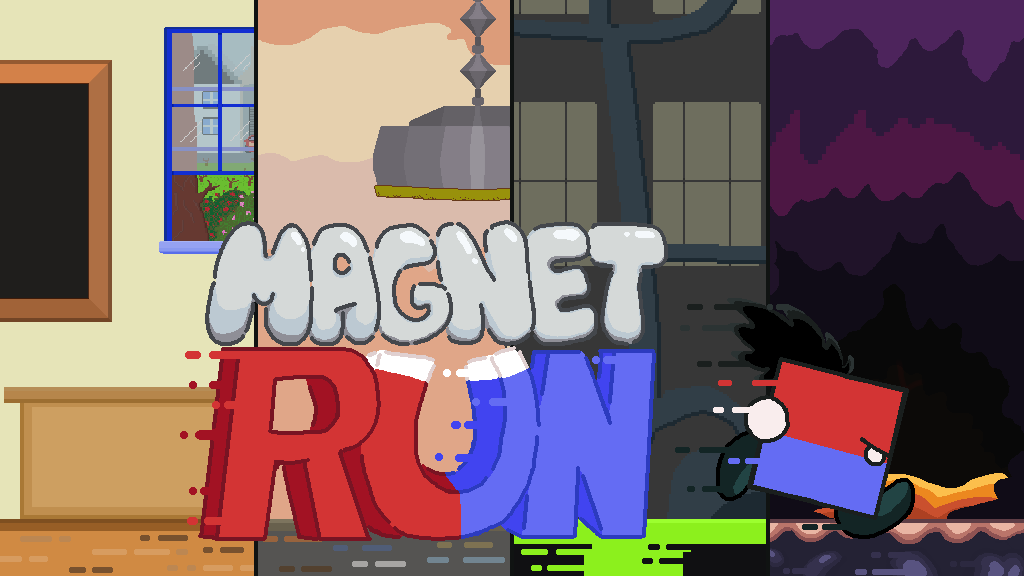Magnet Run: Small Team Development
During the Spring of 2023, I was a part of a development team for an educational game called Magnet Run. The platformer game revolved around teaching grade schoolers the fundamentals of magnetism and other aspects such as electromagnetism. The kids played as Dippy, a small dipole magnet, and how they wanted to rescue their friend Neo from a junkyard. Looking back, it is humorous that this 3-month long project can be described in two sentences but the amount of work put into Magnet Run can not be understated.
For some context, Magnet Run was developed by a small team of five and as such, members had to have multiple roles to ensure success. For instance, I was the lead artist, programmer, and co-storywriter. Often enough, I had to bridge together the art and code of Magnet Run since I was familiar with both areas.
Designing Dippy
One instance of this is the Dippy character itself. Since Magnet Run revolves around the idea of magnetism and playing around with it, Dippy had to be a magnet character that can have its magnet body freely manipulated. As such, Dippy, who has a face, legs, arms, hair, and a magnet body, had to have their limbs separated from each other to ensure that in-game, if Dippy were to rotate their magnet body to solve a puzzle, Dippy would not look so wonky by having the rest of their limbs rotate as well. By separating Dippy’s limbs in the art and then reproducing the full look within code, we were able to individually manipulate a part of Dippy while keeping the rest intact.
Planning for Success
To ensure success, time commitment, and teamwork were of high importance. At the start of the game’s development, I was not super familiar with video game development nor much of the roles I have listed. As a CS student, I did code but I rarely had to code with others over an extended period, nor did I have to merge my programs with others. As for art, I was a hobbyist but never really showed anyone my art before so having to make art for a public release was a frightening yet exciting experience.
Working on a team with people with different backgrounds and skill sets was also foreign to me. Sometimes, one person couldn’t honestly communicate with others or they didn’t finish their tasks in time. In moments like these, we split the work among those who finished their assignments so the team as a whole can catch up. But to ensure falling behind doesn’t happen again, we would communicate how our time was managed throughout the upcoming days and we would express what tasks we can confidently complete in that timeframe. These core ideas helped us pull through the finish line which was the date of submission.
This is a link to the web version of Magnet Run
